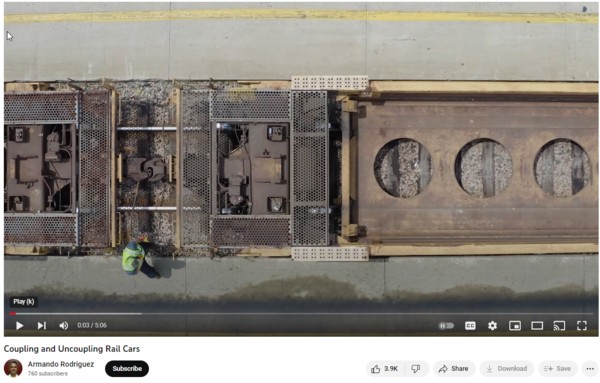No, not THAT type of couple! I’m talking about coupling and uncoupling during operations. It’s the most fundamental of tasks. Even so, there are some things we can do to enhance the experience of operating our layouts.
To start, here’s an excellent video explaining how the big boys do it. After watching it, here some takeaways.
-After making a couple, especially if the next move will be a shove, the prototype always pulls back slightly to make sure they actually did lock the couplers. It’s called “stretching” (00:50 mark in the video). If you listen to scanner traffic carefully, from time to time you’ll here the conductor say “Give me a stretch”. Not doing so in real life has resulted in some pretty serious accidents. They “think” they have the car and begin the shove. They get to the end and stop but….the car keeps rolling. Not good. I always incorporate this practice when operating solo.
-Note the red zone procedures in the video. When I operate solo I don’t “talk to myself” but I do pause a second to visualize them doing this.
-In the real world when a loco. couples to a car, it’s like hitting a brick wall. The car being grabbed barely moves, if at all. Capturing that dynamic with our much lighter models can be hard to replicate. Having a car skate an inch or two after the locomotive grabs it is like nails on a chalkboard for me but it’s hard to control. The solution? Just hit your throttle’s brake key the instant you make the couple. Doing so gives you the hard stop you’re looking for. Remember to release the brake.
-The section on coupler alignment in the video is interesting. I’ve actually seen crews do that. Now I don’t feel so guilty about my less than perfect Kadee maintenance. Just align them like they do in the field.
-Shelf couplers? Most tank cars have them these days and Kadee makes some nice ones. The problem? The Kadee’s are too prototypical and can be a real bear to unhook. I gave up and went back to standards on all of my cars.
-Trip pins. Unless you use uncoupling magnets, the trip pins on your couplers serve no purpose whatsoever. They don’t look so great and can snag things. If you don’t need them, snip them off.
Interested in operational subjects like this? Check on my book How to Operate a Modern Switching Layout.

